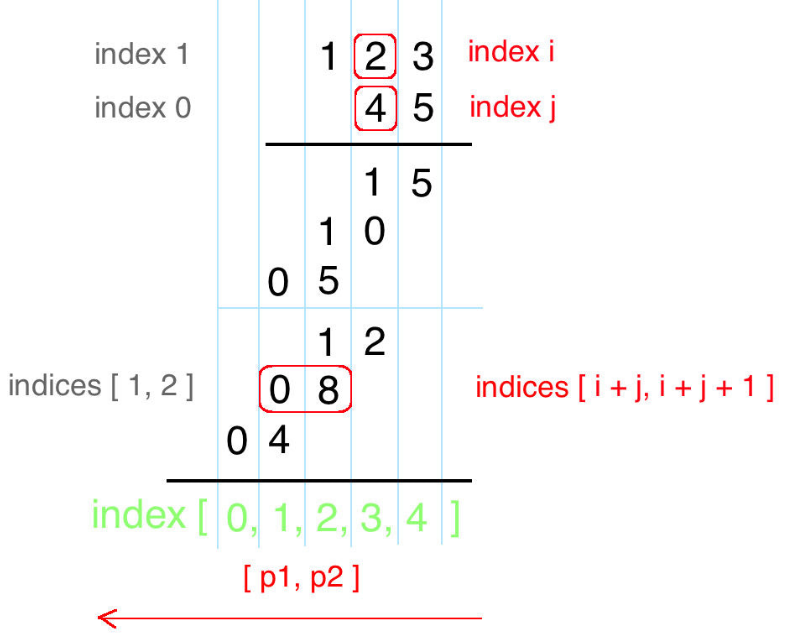1. Combination Sum
Given a set of candidate numbers (C) (without duplicates) and a target number (T), find all unique combinations in C where the candidate numbers sums to T.
The same repeated number may be chosen from C unlimited number of times.
Note:
- All numbers (including target) will be positive integers.
- The solution set must not contain duplicate combinations.
For example, given candidate set [2, 3, 6, 7] and target 7,
A solution set is:
[ [7], [2, 2, 3] ]
解析:从一组不重复的数字中选择若干个,和为指定的数字,注意单个数字能重复选择,找出所有这种组合。一个可行的想法是利用递归的思想来解决,每当选一个值 a 后,剩下的是如何从数字组中找出和为 target-a 的组合,其实是相同的问题。
基本递归思路:保持一个“全局”的 List<List<integer>> 用于存储符合条件的数字对 ——> 保持一个临时存储遍历到的数字对的集合 tempList ——> 用一个remain来记录target减去临时数字集合后剩下的值,用一个start来记录数组递归遍历的开始位置 ——> 从数组的第一位开始递归遍历,将数字加入到临时集合中,这个时候判断 remain的正负,如果小于0表明这个值不应该加入到当前的 tempList中,直接跳出,返回到上一层递归;如果等于0,则表明当前的tempList中的数字对之和正好为target,直接加入到 List<List<integer>> 中;如果大于0则继续向下递归。
import java.util.*;
public class LeetCode{
public static void main(String[] args){
Scanner sc=new Scanner(System.in);
String input=sc.nextLine().replaceAll("\\]|\\[| ",""); //这里 ] 好像一定要在 [ 的前面,要不然不能正确替换
int target=sc.nextInt();
String[] strs=input.split(",");
int[] nums=new int[strs.length];
for(int i=0;i<strs.length;i++)
nums[i]=Integer.parseInt(strs[i]); //对于char可以直接减字符0转为整数但是对于String是不行的
List<List<Integer>> list=new ArrayList<>();
backtrack(list, new ArrayList<Integer>(), nums, target,0);
for(List<Integer> i:list){
for(int a:i)
System.out.print(a+" ");
System.out.println();
}
}
public static void backtrack(List<List<Integer>> list, List<Integer> tempList,int[] nums, int remain, int start){
if(remain<0) return;
else if(remain==0) list.add(new ArrayList<>(tempList)); //以tempList中的数字实例化新的List再放入到集合中,不能直接放tempList
else{
for(int i=start;i<nums.length;i++){
tempList.add(nums[i]);
backtrack(list,tempList,nums,remain-nums[i],i); //i不加1是因为能再选nums[i]
tempList.remove(tempList.size()-1);
}
}
}
}
关于上面学到的一点是,如果往集合里加集合,那么加入的貌似是它的引用。试了先将 List<List<integer>> 中加入一个空的List<Integer>, 之后这个List<Integer>怎么改变,原List<List<Integer>>也会改变。这也解释了为什么每次要以tempList中的数字实例化新的List再放入到集合中,而不能直接放tempList。
2. Combination Sum II
上面题目的一种变体,区别就是数字不能重复选择了。
For example, given candidate set [10, 1, 2, 7, 6, 1, 5] and target 8,
A solution set is:
[ [1, 7], [1, 2, 5], [2, 6], [1, 1, 6] ]
解法和上面的类似:
import java.util.*;
public class LeetCode{
public static void main(String[] args){
Scanner sc=new Scanner(System.in);
String sc_r=sc.nextLine().replaceAll("\\]| |\\[","");
int target=sc.nextInt();
String[] scs=sc_r.split(",");
int[] array=new int[scs.length];
for(int i=0;i<scs.length;i++){
array[i]=Integer.parseInt(scs[i]);
}
List<List<Integer>> res=combinationsSum2(array,target);
for(List<Integer> list:res){
for(int a:list)
System.out.print(a+" ");
System.out.println();
}
}
static List<List<Integer>> combinationsSum2(int[] cand, int target){
Arrays.sort(cand);
List<List<Integer>> res=new ArrayList<List<Integer>>();
List<Integer> path=new ArrayList<Integer>();
dfs_com(cand,0,target,path,res);
return res;
}
static void dfs_com(int[] cand, int cur, int target, List<Integer> path, List<List<Integer>> res){
if(target==0){
res.add(new ArrayList(path));
return;
}
if(target<0)return;
for(int i=cur;i<cand.length;i++){
if(i>cur&&cand[i]==cand[i-1]) continue;
path.add(path.size(),cand[i]);
dfs_com(cand,i+1,target-cand[i],path,res);
path.remove(path.size()-1);
}
}
}
3. Multiply Strings
Given two non-negative integers num1 and num2 represented as strings, return the product of num1 and num2.
Note:
- The length of both
num1andnum2is < 110. - Both
num1andnum2contains only digits0-9. - Both
num1andnum2does not contain any leading zero. - You must not use any built-in BigInteger library or convert the inputs to integer directly.
思路:这题的要求很明显,就是对字符串形式的两个数字,不实用内置的字符串转整数方法来实现两者之间的乘法。基本思路是现将字符串转为数字数组,再观察下乘法的规律,当然了,涉及到数组,那么就要找到单个数字乘法与数组索引之间的规律。一个重点是:
Start from right to left, perform multiplication on every pair of digits, and add them together. Let’s draw the process! From the following draft, we can immediately conclude:
num1[i] * num2[j] will be placed at indices [i + j, i + j + 1] 
找到了这个规律,那么便可以使用两层循环来实现乘法,数字和数字相乘时,和应该是乘积加上一轮循环计算中得到的相应位置低位值,然后分别利用除法和取余来更新高位和低位的数字,注意这里高位还要加上原有位置计算得到的值。
import java.util.*;
public class LeetCode{
public static void main(String[] args){
Scanner sc=new Scanner(System.in);
String num1=sc.nextLine();
String num2=sc.nextLine();
System.out.println(multiply(num1,num2));
}
static String multiply(String num1, String num2){
int m=num1.length(),n=num2.length();
int[] pos=new int[m+n];
for(int i=m-1;i>=0;i--){
for(int j=n-1;j>=0;j--){
int mul=(num1.charAt(i)-'0')*(num2.charAt(j)-'0');
int p1=i+j,p2=i+j+1;
int sum=mul+pos[p2];
pos[p1]+=sum/10; //高位是除法后加上上一次循环时得到的高位的值
pos[p2]=sum%10; //低位直接取余
}
}
// 将pos数组转为字符创,不要前面的0
StringBuilder sb=new StringBuilder();
for(int p:pos)if(!(sb.length()==0&&p==0)) sb.append(p); //去除pos数组中前面的0,一开始当sb中没有值并且遇到的是数组中前面的0时,不将数字放入到sb中
return sb.length()==0? "0":sb.toString();
}
}



